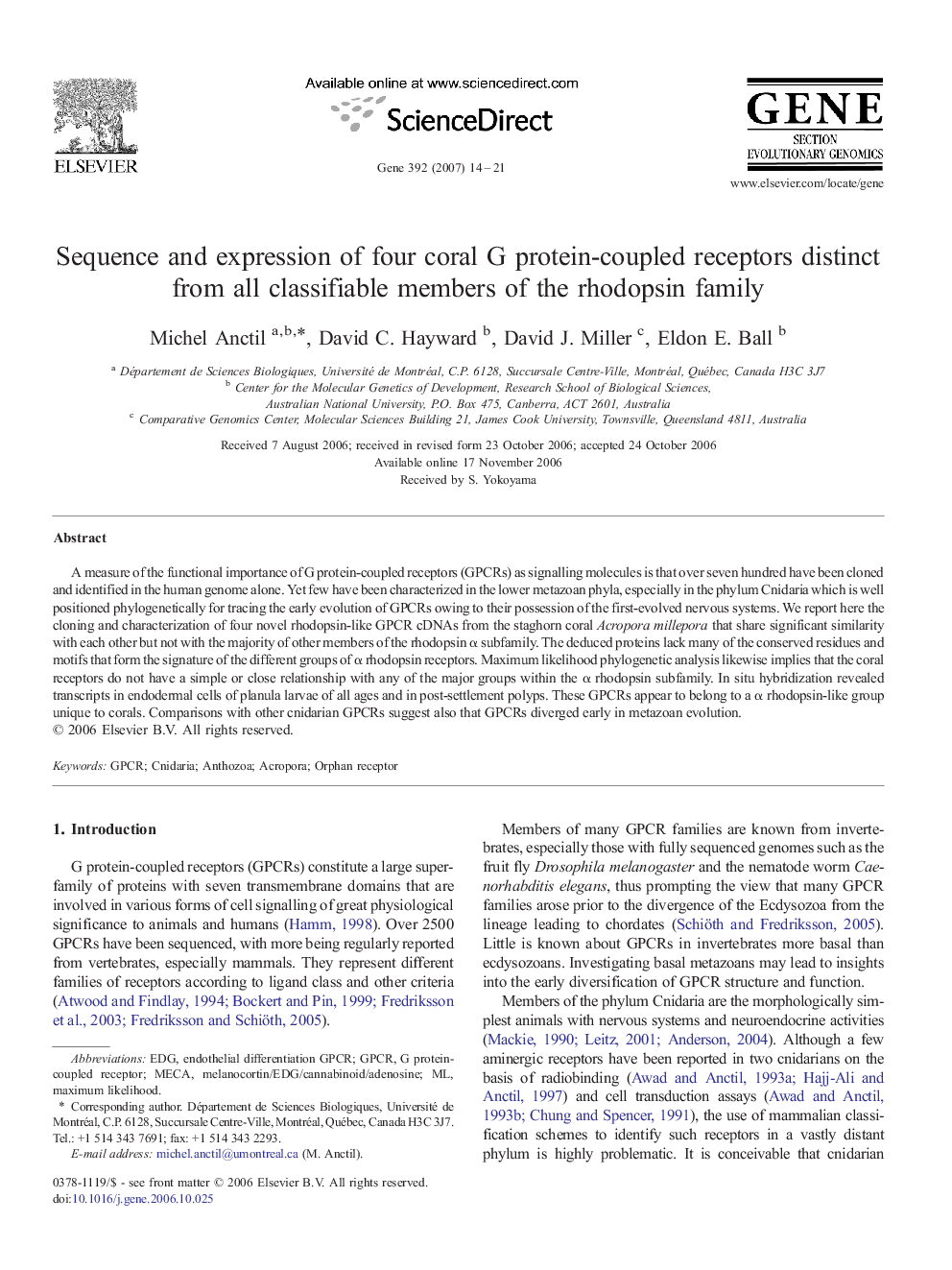| Article ID | Journal | Published Year | Pages | File Type |
|---|---|---|---|---|
| 2819790 | Gene | 2007 | 8 Pages |
A measure of the functional importance of G protein-coupled receptors (GPCRs) as signalling molecules is that over seven hundred have been cloned and identified in the human genome alone. Yet few have been characterized in the lower metazoan phyla, especially in the phylum Cnidaria which is well positioned phylogenetically for tracing the early evolution of GPCRs owing to their possession of the first-evolved nervous systems. We report here the cloning and characterization of four novel rhodopsin-like GPCR cDNAs from the staghorn coral Acropora millepora that share significant similarity with each other but not with the majority of other members of the rhodopsin α subfamily. The deduced proteins lack many of the conserved residues and motifs that form the signature of the different groups of α rhodopsin receptors. Maximum likelihood phylogenetic analysis likewise implies that the coral receptors do not have a simple or close relationship with any of the major groups within the α rhodopsin subfamily. In situ hybridization revealed transcripts in endodermal cells of planula larvae of all ages and in post-settlement polyps. These GPCRs appear to belong to a α rhodopsin-like group unique to corals. Comparisons with other cnidarian GPCRs suggest also that GPCRs diverged early in metazoan evolution.
